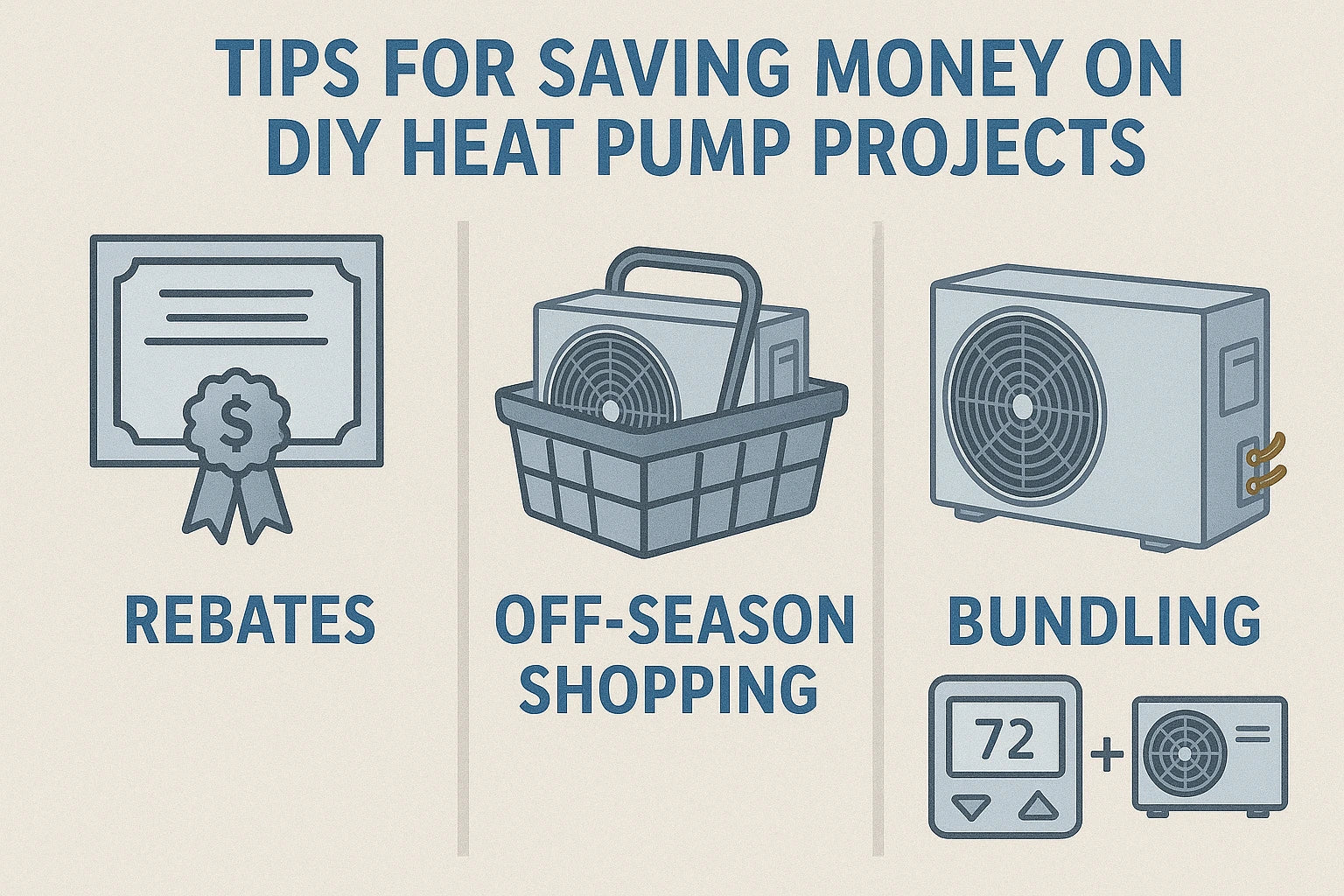If you’ve been researching heat pumps, you’ve probably noticed that installation costs can rival — or even exceed — the price of the equipment itself. That’s a big reason many homeowners consider going the DIY route. Done right, installing your own system can save thousands. But without careful planning, unexpected expenses can pile up quickly.
In this guide, we’ll break down what a DIY heat pump installation really costs in 2025, where you can save money, and what hidden costs you need to budget for.
For a complete walkthrough of the installation process, see the Complete Guide to DIY Heat Pump Installation.
Breaking Down the Costs of DIY Heat Pump Installation
A DIY project doesn’t mean “free labor.” Even without hiring a contractor, there are several cost categories to consider.
1. Equipment Costs
The biggest chunk of your budget will go toward the heat pump system itself. Prices vary based on capacity, efficiency rating, and brand.
-
Single-zone mini-split systems: $1,200 – $3,000
-
Multi-zone systems: $3,500 – $8,000
📘 Rewiring America explains that while high-efficiency heat pumps often cost more upfront, they can significantly lower your long-term energy bills and offer faster payback in climates with extreme heating or cooling demands.
2. Tools and Supplies
Unless you already own HVAC tools, you’ll need to invest in or rent equipment:
-
Vacuum pump – $100 – $300
-
Manifold gauge set – $50 – $150
-
Micron gauge – $80 – $200
-
Torque wrench – $40 – $100
-
Line set covers – $30 – $100
3. Electrical Work
Electrical upgrades can be one of the biggest “surprise” costs for DIYers. A dedicated 240V circuit, breaker, and proper wiring are required for most systems.
-
New circuit & breaker: $150 – $500
-
240V wiring: $300 – $800
-
Panel upgrade (if needed): $1,200 – $3,000
4. Mounting and Site Prep
How and where you mount your outdoor unit affects cost.
-
Ground pad: $50 – $200
-
Wall bracket: $100 – $300
-
Raised stand: $150 – $500
Typical DIY Heat Pump Cost Ranges (2025)
Putting it all together, here’s what you can expect:
| Category | Low End | High End |
|---|---|---|
| Equipment | $1,200 | $8,000 |
| Tools & Supplies | $200 | $800 |
| Electrical Work | $150 | $3,000 |
| Mounting & Site Prep | $50 | $500 |
| Total | $1,600 | $12,300 |
📘 Use the ENERGY STAR Certified Heat Pump Database to compare efficiency ratings, capacities, and price ranges for models that fit your budget.
Where DIYers Can Save Money
One of the biggest benefits of a DIY install is cost control — but only if you know where to cut and where to invest.
-
Do your own site prep — Level the pad area, clear vegetation, and drill wall penetrations before installing.
-
Buy tools instead of renting — If you plan to install more than one system (or help friends/family), purchasing tools can be cheaper long-term.
-
Shop off-season — Buying in the spring or fall often means lower prices than peak summer/winter.
-
Leverage rebates and incentives — 📘 The Energy Star Rebate Finder lists national and state programs that can shave hundreds off your costs.
Hidden or Overlooked Costs to Budget For
Even experienced DIYers can get caught off guard by expenses outside the main installation:
-
Permit fees — Some municipalities require permits for electrical or HVAC work, even if you’re doing it yourself.
-
Inspection fees — A final inspection may be needed for code compliance.
-
Old equipment disposal — Hauling away an old system can cost $50–$200.
-
Extra refrigerant — If your line set is longer than the factory charge covers, you’ll need additional refrigerant.
📘 The International Code Council points out that code compliance isn’t just about legal requirements — it also ensures safety and efficiency.
Risks That Could Add to Costs
Saving money upfront is great — unless it costs you more down the road.
-
Mistakes during installation — A poor flare connection or missed vacuum step can lead to leaks that require costly rework.
-
Failed inspections — Skipping code requirements can mean paying for a pro to fix issues before approval.
-
Warranty issues — If you can’t document the installation properly, you might lose coverage.
📘 ACHR News warns that improper installation is one of the top causes of reduced system efficiency and premature equipment failure.
When It Makes Sense to Hire a Pro
Even if you’re confident in most aspects of the installation, there are times when professional help is worth the investment:
-
Complex electrical work — Especially if it involves upgrading your main panel.
-
Multi-zone installs — More refrigerant lines mean more opportunities for leaks.
-
Challenging site conditions — Tight spaces, high walls, or difficult mounting surfaces can make installation risky.
Final Thoughts from Alex
DIY heat pump installation can be an incredibly rewarding project, saving you thousands in labor costs and giving you full control over your system setup. But the savings only stick if you plan your budget carefully and avoid costly mistakes.
Know your equipment costs, gather your tools ahead of time, budget for permits, and take advantage of rebates. A little extra planning can mean the difference between a smooth install and a budget-busting headache.
Next up: Do DIY Heat Pump Installs Void the Manufacturer Warranty? — find out how to protect your coverage when going the DIY route.
Alex Lane
Your Home Comfort Advocate







